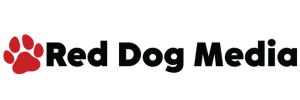
Organization is key in having a productive workplace. At Red Dog Media, we turn to Trello, a web-based project management application, to keep our workflow organized and efficient. With its kanban framework, Trello provides a plethora of project benefits that push our team to do their best.
There are many project management applications out there but Trello is ideal because it’s free and easy to use. It allows you to keep track of your progress, collaborate remotely, and also track bugs and feedback. Although physical planning boards are popular with some teams, a digital board, such as the ones on Trello, are the optimal choice as they provide traceability, easy collaboration, and portability.
Trello works well across a spectrum of different fields because it uses the kanban method. Kanban is one of the most popular development methodologies and can be used by teams of all sizes. The term originated from the company Toyota in the 1940s and in Japanese it literally translates to “visual signal.” On a kanban board, work items are represented visually. This allows teams to see the status of each piece of work at any time.
Kanban is based on three rules: visualize workflow, limit the amount of work in progress, and measure cycle time. Visualizing workflow allows the team to see all of the items in context of each other. Limiting the amount of work in progress keeps team members focused on one task instead of spreading themselves thin over many. Measuring cycle time allows the team to constantly improve the process by shortening the time it takes to finish it.
A basic kanban board consists of a three step process that’s put into columns: To Do, In Progress, and Done. Kanban boards are versatile though and “depending on a team’s size, structure, and objectives, the workflow can be mapped to meet the unique process of any particular team.” Each task is allocated to a card on the board. These cards “feature critical information about that particular work item, giving the entire team full visibility into who is responsible for that item of work, a brief description of the job being done, how long that piece of work is estimated to take, and so on.” When a task is taken on or finished it is moved to the next column, allowing the team to track the progress of the project in a highly visual manner.
Here are some of the benefits that kanban boards like Trello provide:
Increased productivity – Idle time is reduced by having teams utilize their time better.
Increased efficiency – It offers a systematic approach to finding opportunities for improvement.
Flexibility – There are no set phase durations and priorities are always being adjusted based on the most recent info.
Reduction of wasted work and wasted time – By analyzing the project as a whole, it cuts down on work that is incorrect or not needed and also on time spent doing wrong work instead of focusing on the more valuable work.
Team members’ ability to focus – By ranking tasks in order of importance, team members are able to focus on the task that really matter instead of working on tasks that might be more frivolous at the time.
These benefits are no surprise, as science supports visual organization tools such as Trello. Your brain has the ability to process several thoughts simultaneously while looking at images. The brain also processes information 60,000 times faster when looking at images rather than reading plain text. This is because “a third of the gray matter of the brain makes up brain neurons which aid in visual perception.” Kanban boards are the best way to visualize a variety of different processes. Team members can clearly see the progress of the project and where feedback is needed just by glancing at the board. This ensures full traceability and fast indication of dependencies and blockers.
Using Trello is a simple process. You can create separate boards for each project you’re working on. You create columns for each stage of the process and cards for each task, then you move the cards between columns as the project progresses through stages. Since Trello is collaborative, you can assign people to tasks to track who is working on it. Some features you can track on the card are checklists, discussions, due dates, and attachments. Trello also has color-coded labels that you can add to each card. These colors come in handy if you want to organize different types of tasks visually.
At Red Dog Media, we utilize Trello in a variety of ways. Like many companies, we use Trello to manage our software development process. We also integrate Trello into our marketing projects as well as HR and general office management. The kanban process keeps our team organized and accountable which makes our workflow quick and efficient. It’s easy to analyze our boards and see where improvement is needed as we constantly strive for innovation. Trello keeps the Red Dog Media team working together to produce the highest quality results.
If you liked this article, why not check out another on the Red Dog Media Blog:
The Rise of Software Engineering
Autonomy: The Key to Employee Success
Virtual Reality; Real Results: AR and VR’s Role In the Future of Consumer Interaction
